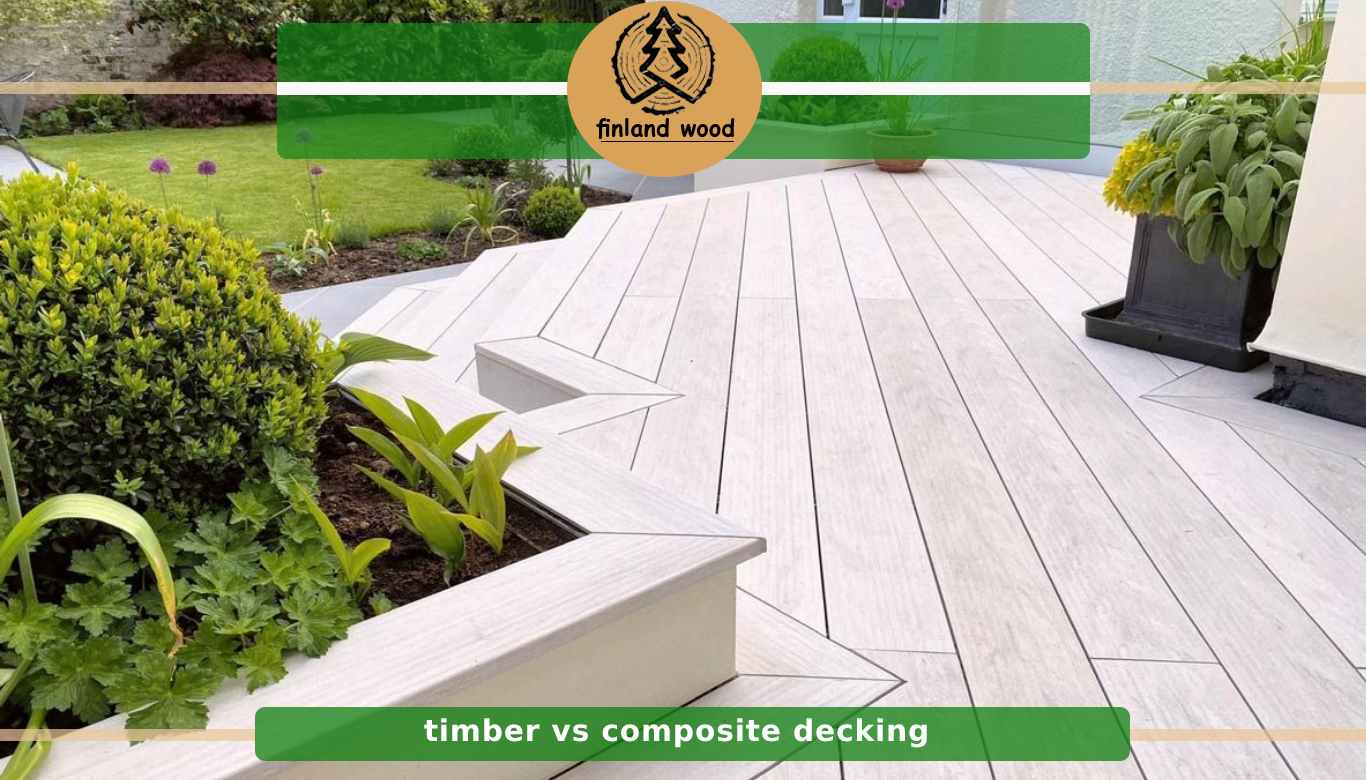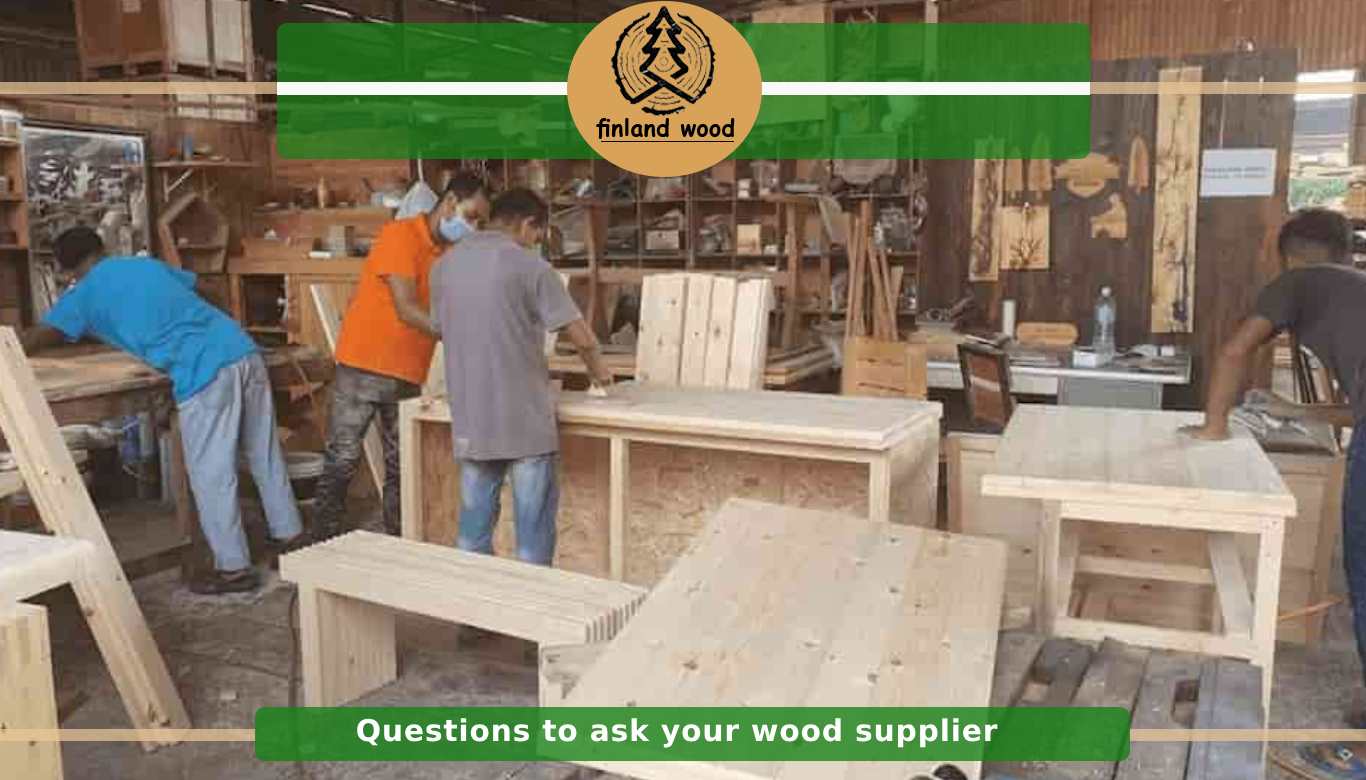Timber and composite decking are two popular choices for outdoor decking, and each has its own unique advantages and disadvantages.
Timber decking is made from natural wood, which gives it a classic, authentic look. It can be stained or painted in a variety of colors and finishes, and it’s available in a range of species such as pine, cedar, and redwood. Timber decking is generally less expensive than composite decking, and it has a natural resistance to rot and insects. However, it does require regular maintenance, including staining or sealing every year or two to protect it from the elements.
Composite decking, on the other hand, is made from a mixture of wood fibers and recycled plastic, which makes it more durable and resistant to moisture, rot, and insects. It’s available in a wide range of colors and finishes, and it doesn’t require staining or sealing. Composite decking is also low-maintenance, as it can be easily cleaned with soap and water. However, it’s generally more expensive than timber decking, and it may not have the same authentic look and feel as natural wood.
Ultimately, the choice between timber and composite decking depends on your personal preferences, budget, and the specific requirements of your outdoor space. If you’re looking for a classic, natural look and are willing to perform regular maintenance, timber decking may be a good choice. If you’re looking for a low-maintenance, long-lasting option with a wide range of colors and finishes, composite decking may be the better option for you.
How To Build A Deck
read more: Wooden Terrace Decks
timber or composite decking
The decision between timber or composite decking ultimately depends on your personal preferences and requirements.
If you prefer a natural, authentic look and feel, and you’re willing to perform regular maintenance to protect the decking from the elements, then timber decking may be a good choice for you. Timber decking can also be less expensive than composite decking, and it has a natural resistance to rot and insects.
On the other hand, if you’re looking for a low-maintenance, long-lasting option with a wider range of colors and finishes, then composite decking may be a better choice. Composite decking is generally more expensive than timber decking, but it is more durable, resistant to moisture, rot, and insects. It also doesn’t require staining or sealing, and it can be easily cleaned with soap and water.
Ultimately, you should consider your budget, the specific requirements of your outdoor space, and your personal preferences when deciding between timber or composite decking.
is composite decking better than wood
Composite decking has some advantages over traditional wood decking, but whether it is better or not depends on your specific needs and preferences.
Some of the advantages of composite decking include:
- Durability: Composite decking is made of a mixture of wood fibers and recycled plastic, which makes it more resistant to rot, moisture, and insects than wood decking. It’s also less likely to warp or splinter over time.
- Low maintenance: Composite decking requires less maintenance than wood decking. It doesn’t need to be stained or sealed, and it can be easily cleaned with soap and water.
- Aesthetics: Composite decking is available in a variety of colors and finishes, and it can be designed to mimic the look of real wood.
- Eco-friendliness: Composite decking is often made from recycled materials, which can be more environmentally friendly than using new wood.
However, there are some downsides to composite decking as well. It can be more expensive than wood decking, and it can sometimes feel less natural and authentic. Additionally, while it’s true that composite decking requires less maintenance than wood decking, it’s not completely maintenance-free and may require periodic cleaning and maintenance over time.
Ultimately, whether composite decking is better than wood depends on your specific needs and preferences. If you value durability and low maintenance, and don’t mind paying a bit more upfront, then composite decking may be a good choice for you. But if you prefer the natural look and feel of wood and don’t mind performing regular maintenance, then wood decking may be a better option.
What are the disadvantages of timber decks?
While timber decking has many advantages, there are some potential disadvantages to consider as well. Some of these include:
- Maintenance: Timber decking requires regular maintenance to keep it looking its best. This includes staining, sealing, or painting the wood to protect it from the elements and prevent decay, rot, and insect damage. Failing to perform regular maintenance can lead to costly repairs or replacements down the line.
- Weathering: Timber decking can be susceptible to weathering over time. Exposure to sunlight, rain, and extreme temperatures can cause the wood to fade, crack, or warp.
- Cost: Depending on the species of wood used, timber decking can be more expensive than composite decking. This is especially true for more exotic hardwoods.
- Sustainability: Depending on where the timber is sourced from, there may be concerns about sustainability and deforestation. Using responsibly sourced timber or choosing alternative decking materials may be a more environmentally-friendly option.
- Slipperiness: Timber decking can become slippery when wet, which can be a safety hazard. This can be addressed by adding non-slip coatings or textures, but this adds an additional cost.
Overall, timber decking can be a beautiful and durable option for outdoor spaces, but it does require regular maintenance and has some potential downsides to consider.
Is there something better than composite decking?
While composite decking is a popular and durable option for outdoor decks, there are other materials that may be better suited for certain applications or preferences. Some alternatives to composite decking include:
- PVC decking: PVC decking is made of 100% plastic, which makes it highly durable and resistant to moisture, rot, and insects. It doesn’t require staining or sealing, and it’s easy to clean. However, it can be more expensive than composite decking, and it may not have the same natural look and feel.
- Aluminum decking: Aluminum decking is lightweight, durable, and fire-resistant. It’s also low-maintenance, as it doesn’t require staining or sealing. However, it can be more expensive than composite decking, and it may not have the same aesthetic appeal as wood or composite decking.
- Natural stone decking: Natural stone decking, such as slate, travertine, or granite, can provide a beautiful and unique look for outdoor spaces. It’s also durable and low-maintenance, as it doesn’t require staining or sealing. However, it can be more expensive than other decking materials, and it can be slippery when wet.
Ultimately, the best decking material for you will depend on your specific needs, preferences, and budget. It’s important to consider factors such as durability, maintenance, cost, and aesthetics when choosing the right decking material for your outdoor space.
Timber Decking
Every step you take on a terrace designed with wooden floorings gives you the feeling of being in close proximity to nature. The floorboards are typically made from 100% real wood, which experts cut evenly from selected tree trunks in wood mills, using precision machinery.
Therefore, laying all the wooden planks from our online store on your terrace is hassle-free. Healthy trees for our wooden terrace planks come from various regions around the world. You can choose from floorboards made of European pine, Siberian larch, bamboo, Douglas fir, and many other wood types. Each wooden floorboard on your terrace captivates with its unique grains, as each of our planks is one of a kind in this world.
Key Factors for Purchasing High-Quality Wooden Decking
When designing the outdoor space of a new building or as part of a renovation, when planning to lay wooden planks on the terrace, you need to determine the area. With wooden decking from the online store Finland Wood, you can arrange any area of your property as you wish. Outdoor surfaces with square, rectangular, and angled shapes with attractive floorboards in light and dark wood catch the eye.
Depending on the type of wood, you can give your terrace a Nordic, exotic, or simply rustic appearance. After choosing the area to be covered with wooden planks, think about the style in which you want to design your terrace.
Sturdy Wooden Decking for Your Terrace
Since a robust substructure for your wooden decking provides maximum stability and good protection against water infiltration from below, you should certainly choose an appropriate foundation. In the long term, your wooden deck on the terrace is greatly affected by its substructure.
Your substructure can consist of stone slabs, pedestals, or point supports with beam supports. However, point foundations and pedestals also require deck joists, so the simplest version of a foundation is freshly laid stone slabs.
Cleaning and Caring for Wooden Decking
Dry decking can be easily cleaned from contaminants such as leaves, dust, and loose dirt with a broom. Stubborn stains that may appear after a long winter or a party can be gently removed with a bit of water and specialized cleaner. After washing off any remaining soap residue, the deck should be oiled. To ensure sufficient drying of the wood before oil treatment, cleaning it with water only in warm weather is advisable.






